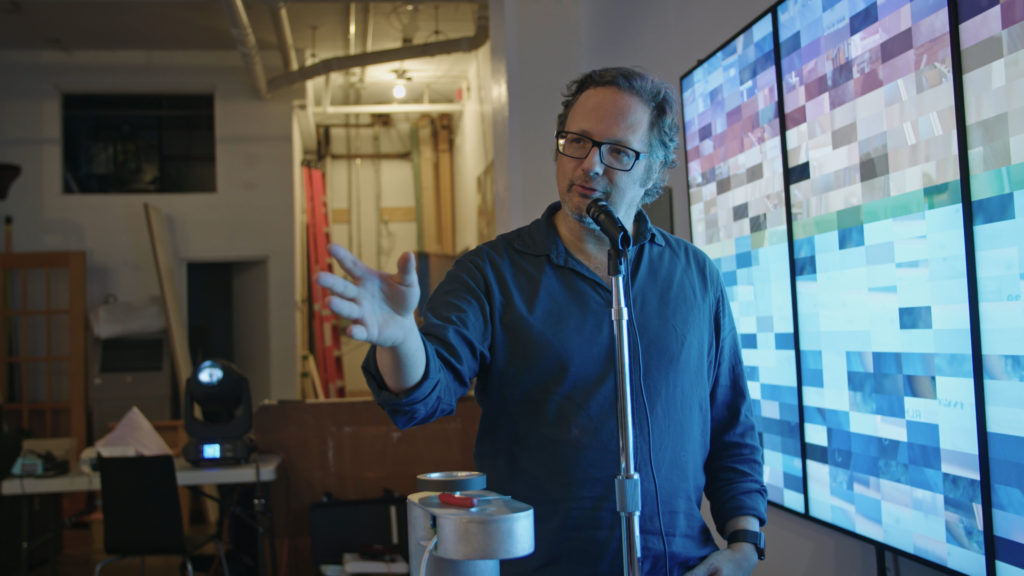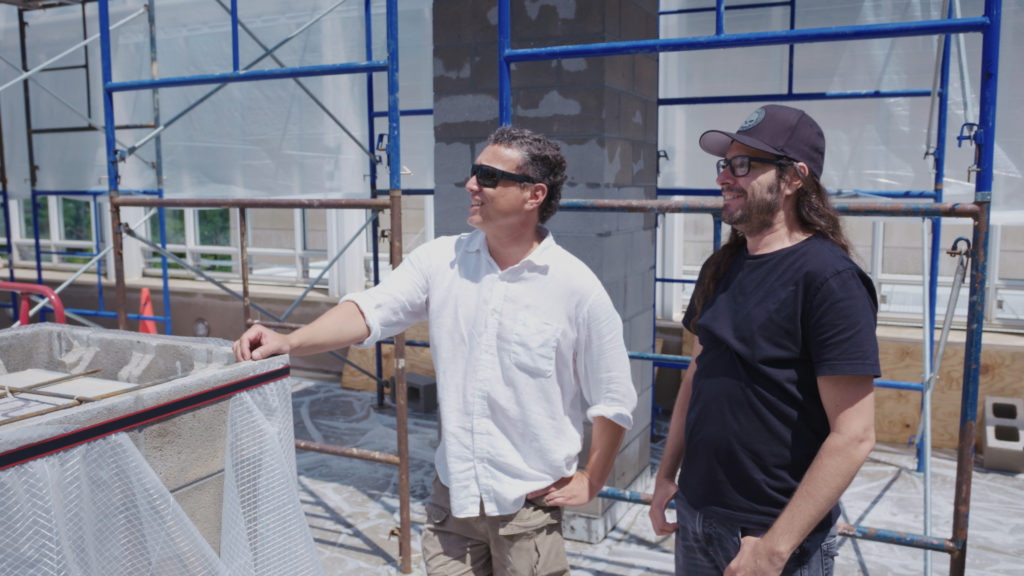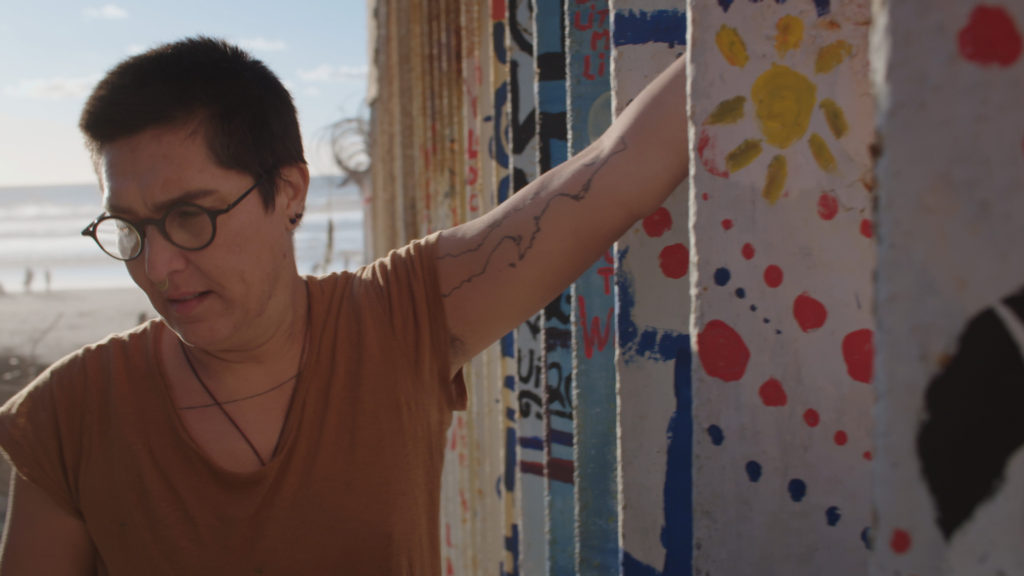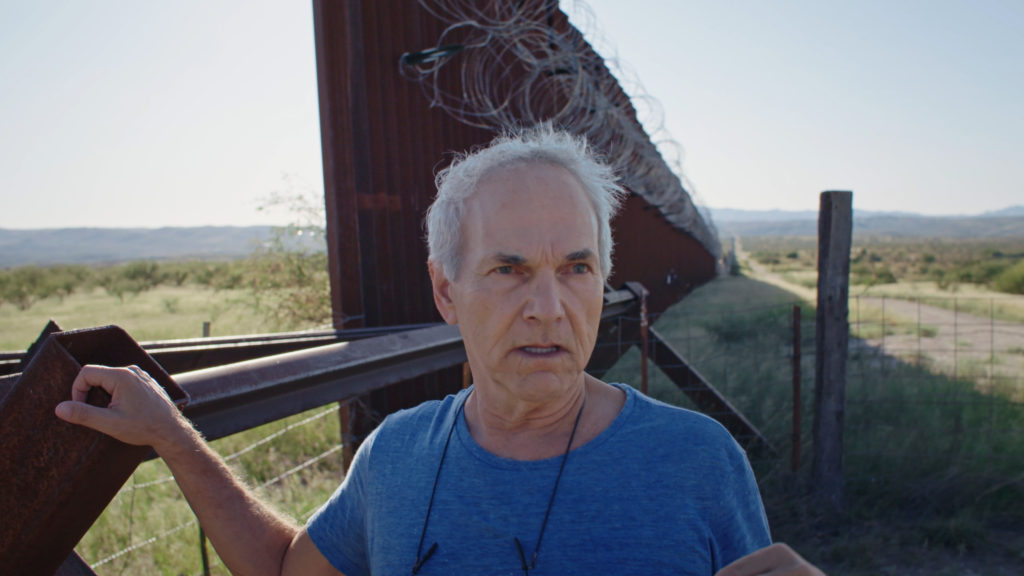Wednesday, 11 November 2020, 1 PM
Online Screening | General Public
MCAD Platforms presents Borderlands, an episode from Art21: Art in the Twenty-First Century, a US-based television series that focuses exclusively on contemporary visual art and artists in the United States and around the world.
The documentary sheds light on the borderland between the United States and Mexico, a vast geography encompassing open deserts and densely populated metropolises, which has long been a site of not only political conflict and social struggle but also intense creative ferment. Taking a new curatorial and filmmaking approach, Art21 connects and juxtaposes a group of acclaimed artists as they work along the U.S.-Mexico border, interweaving their stories to chronicle the creative responses to one of the most divisive moments in the history of this area.
From an epic interactive searchlight installation along the El Paso–Juárez divide to a deeply personal performance at the Tijuana border wall, these artists consider the border as an open wound, a theatrical stage, a political podium, a studio, and a contradictory landscape that features both ugliness and beauty.This episode explores how contemporary art can reveal the new and unexpected, asking viewers to question their preconceived notions of a place seemingly made familiar by mass media. Ultimately, the artists featured in this hour challenge themselves and audiences to embrace a more empathetic view of one of the most contested areas in North America.
Featured Artists

Rafael Lozano-Hemmer in his Montreal studio. Production still from the Art21 television series “Art in the Twenty-First Century,” Season 10, 2020. © Art21, Inc. 2020.
Rafael Lozano-Hemmer
Born 1967, Mexico City, Mexico
I love it, when one has a pre-established notion of what one is going to see and it’s wrong. —Rafael Lozano-Hemmer
An artist working at the intersection of architecture and performance art, Rafael Lozano-Hemmer creates participatory artworks that utilize technology like robotics, heart-rate sensors, and computerized surveillance tools in order to facilitate human connection. Technologically sophisticated yet deceptively simple in their execution, Lozano-Hemmer’s spectacular, immersive works are often installed in public places as a means of transforming these sites into forums for civic engagement.
From an education in chemistry, Lozano-Hemmer’s early career in a molecular recognition lab influenced his conceptual and practical approach to creating art. As early as the 1990s, Lozano-Hemmer worked with custom software and surveillance technologies to create interactive artwork. His work often invites viewers to provide a biometric “snapshot” of themselves—whether their fingerprint, heartbeat, or portrait—that the artist then transforms into a dynamic, collective landscape and representation of both anonymity and community. For his interventions in public spaces, Lozano-Hemmer transforms facades, plazas, parks, and skylines by adding audiovisual elements that viewers can control. The artist refers to this as “relational architec- ture,” a practice that re-contextualizes viewers’ understandings of public spaces and received narratives about them.
Richard Misrach at the U.S.-Mexico border wall, Nogales, Arizona. Production still from the Art21 television series “Art in the Twenty-First Century,” Season 10, 2020. © Art21, Inc. 2020.
Richard Misrach
Born 1949, Los Angeles, California
One of the things I’ve learned from this series is that until you go see this place for yourself, you have no idea what’s really going on there. —Richard Misrach
A leading photographer of his generation, Richard Misrach explores the collision of nature and culture through his large-format color photographs. Fascinated by the political and environmental transformation of the deserts of the American southwest, Misrach creates hauntingly beautiful photographs of arid landscapes that contrast the natural and man-made tragedies found there: floods, fires, nuclear-test sites, the U.S.-Mexico border wall, and the traces of migrants who make the perilous journey north.
Misrach began his career in Berkeley, California, in the early 1970s, photographing the anti-war protests happening throughout the city. Misrach realized that his early work failed to meet his social-activist ambitions and instead turned his camera to the deserts of southern California, Nevada, and Arizona. His ongoing series, Desert Cantos, consists of groups of photographs that depict the ecological effects of human intervention in the desert landscape. A more recent chapter, Border Cantos, captures the pathos of the 2000-mile border between the U.S. and Mexico, including the border wall and the artifacts of migration—clothing, water barrels, ladders—left behind.

Postcommodity at the Art Institute of Chicago in Chicago, Illinois. Production still from the Art21 television series “Art in the Twenty-First Century,” Season 10, 2020. © Art21, Inc. 2020.
Postcommodity
Cristóbal Martínez, New Mexico and Kade L. Twist, California
When I look at the Borderlands, I see a clear demarcation of colonization. We’ve got to start including indigenous worldview in relation to the border. —Kade L. Twist
Postcommodity is an interdisciplinary arts collective composed ofCristóbal Martínez and Kade L. Twist. Postcommodity creates site-specific installations, interventions, videos, and sound works, utilizing the members’ shared Indigenous lens to reveal the incongruent histories embedded in our modern-day institutions, systems, and beliefs. The group often works closely with local communities to create poetic installations that reimagine sites of conflict as places of curiosity that foreground Indigenous culture. Postcommodity was foundedin 2007 by Twist, Steve Yazzie, and Nathan Young and acknowledges the important contributions of its previous collaborators, including Yazzie (2007– 2010), Young (2007–2015), and Raven Chacon (2009–2018). The collective focuses on centering Indigenous perspectives and working in response to the land where their projects take place.

Tanya Aguiñiga at the U.S.-Mexico border wall, Tijuana, Mexico. Production still from the Art21 television series “Art in the Twenty-First Century,” Season 10, 2020. © Art21, Inc. 2020.
Tanya Aguiñiga
Born 1978, San Diego, California
A lot of my work is about visibility and more representation: allowing more people to see themselves or their struggles mirrored by the work. —Tanya Aguiniga
An artist, designer, and craftsperson, Tanya Aguiñiga works with traditional craft materials like natural fibersand collaborates with other artistsand activists to create sculptures, installations, performances, and community-based art projects. Drawing on her upbringing as a binational citizen, who daily crossed the border from Tijuana to San Diego for school, Aguiñiga’s work speaks of the artist’s experience of her divided identity and aspires to tell the larger and often invisible stories of the transnational community.
Aguiñiga began her career by creating collaborative installations with the Border Art Workshop/Taller de Arte Fronterizo, an artist collective that addressed political and human rights issues at the U.S.-Mexico border. The artist co-built and for six years ran a community center in Tijuana, aimed at bringing attention through arts initiatives to injustices that the local community faced. Aguiñiga has maintained this spirit of activism and community collaboration throughout her career, going on to create many performances and installations that involve the participation of other artists, activists, and community members. In her installations, furniture, and wearable designs, Aguiñiga often works with cotton, wool, and other textiles, drawing upon Mesoamerican weaving and traditional forms.
To know more about Art21: Art in the Twenty-First Century, click here.
* * *
MCAD Platforms
The program is another avenue for engaging the public, and part of our current programming on Learning. Independent of the museum’s exhibitions, it seeks to widen the reach of MCAD’s audiences by promoting contemporary art and design through workshops, lectures, and events for a wide range of demographic.
This online event is presented in collaboration with Art21, a nonprofit global leader in art education, producing preeminent films about today’s leading visual artists and education programs that inspire creativity worldwide.
To register for the event, accomplish the form below. Please include the title of the event.



